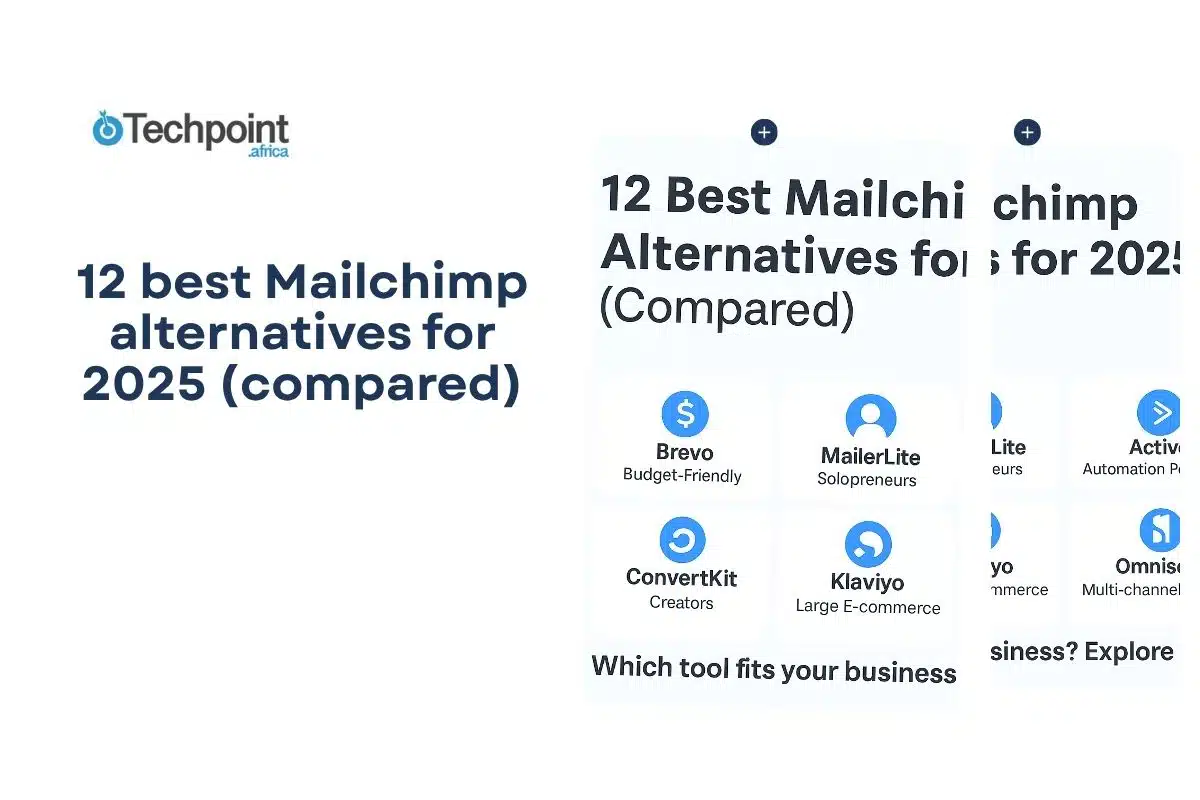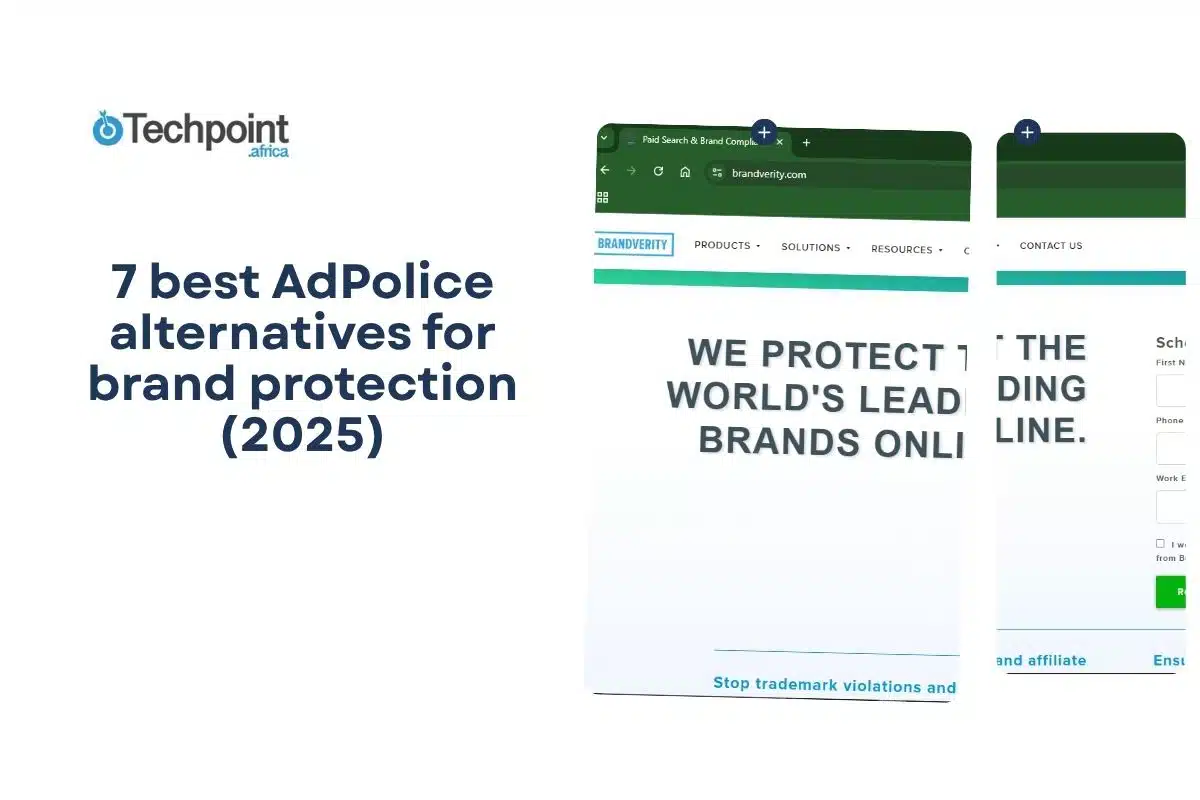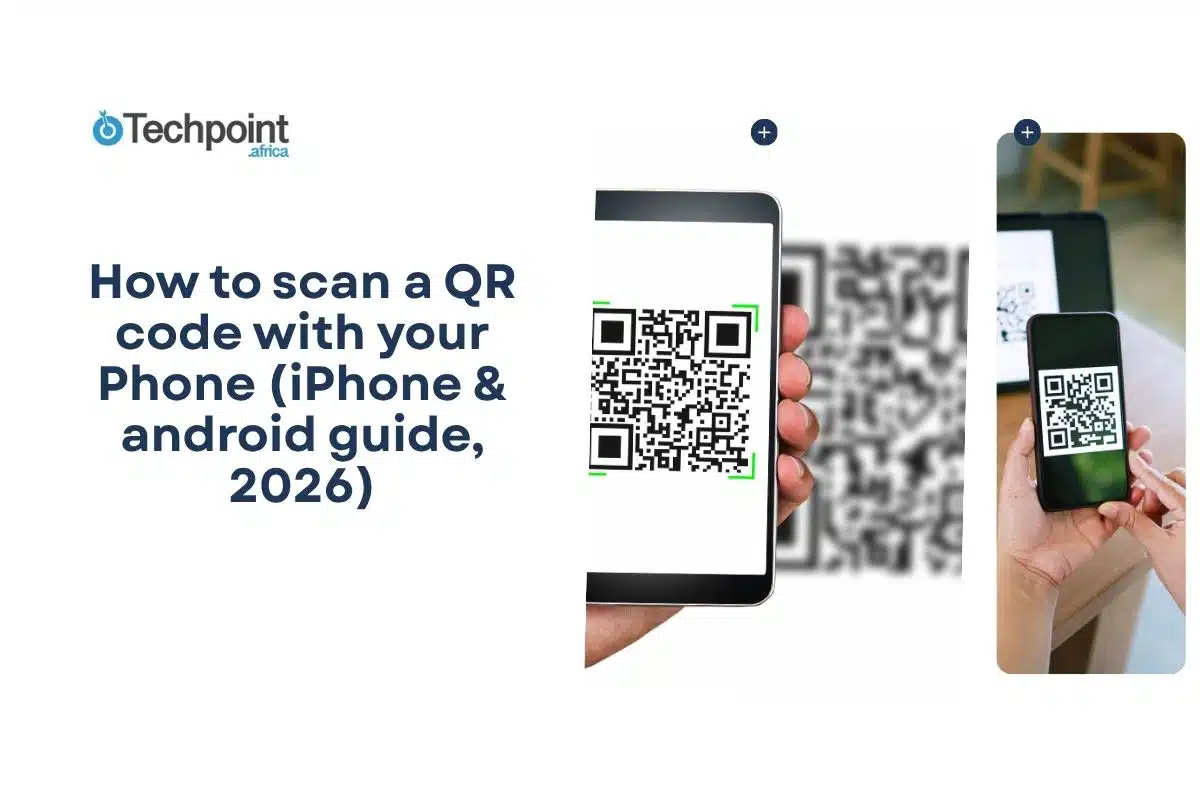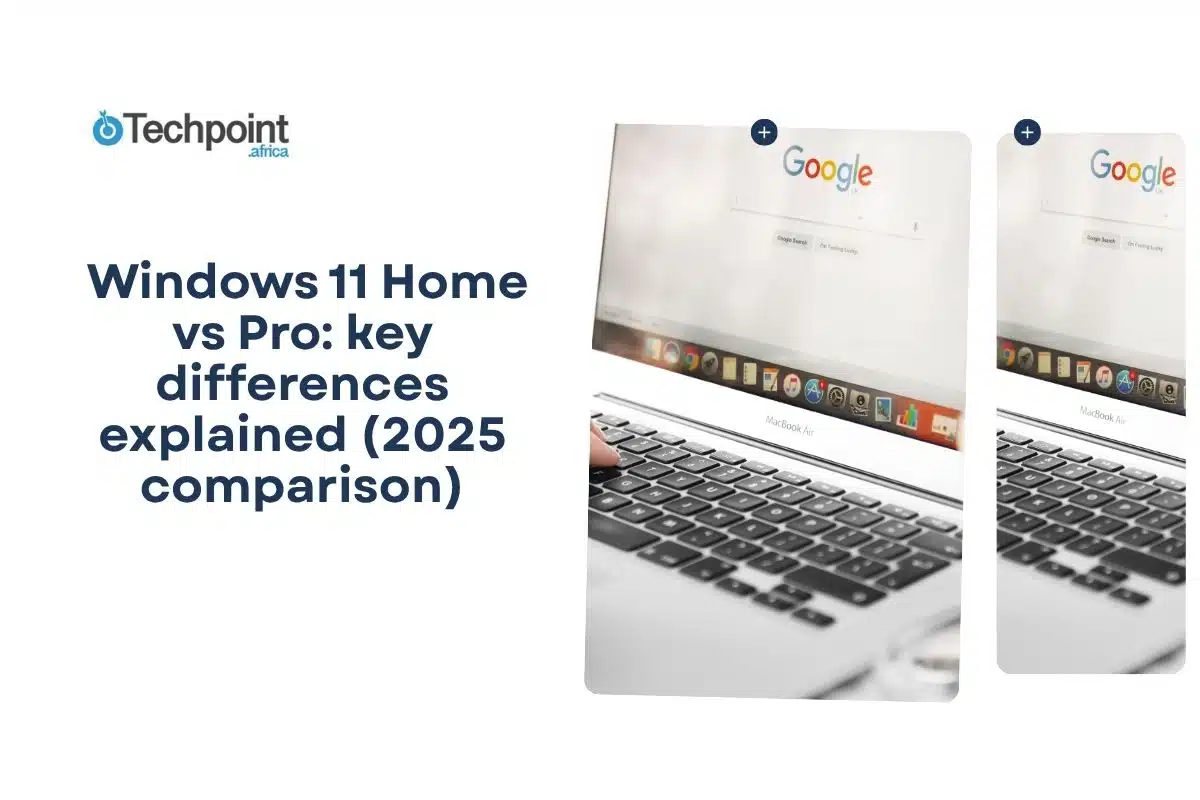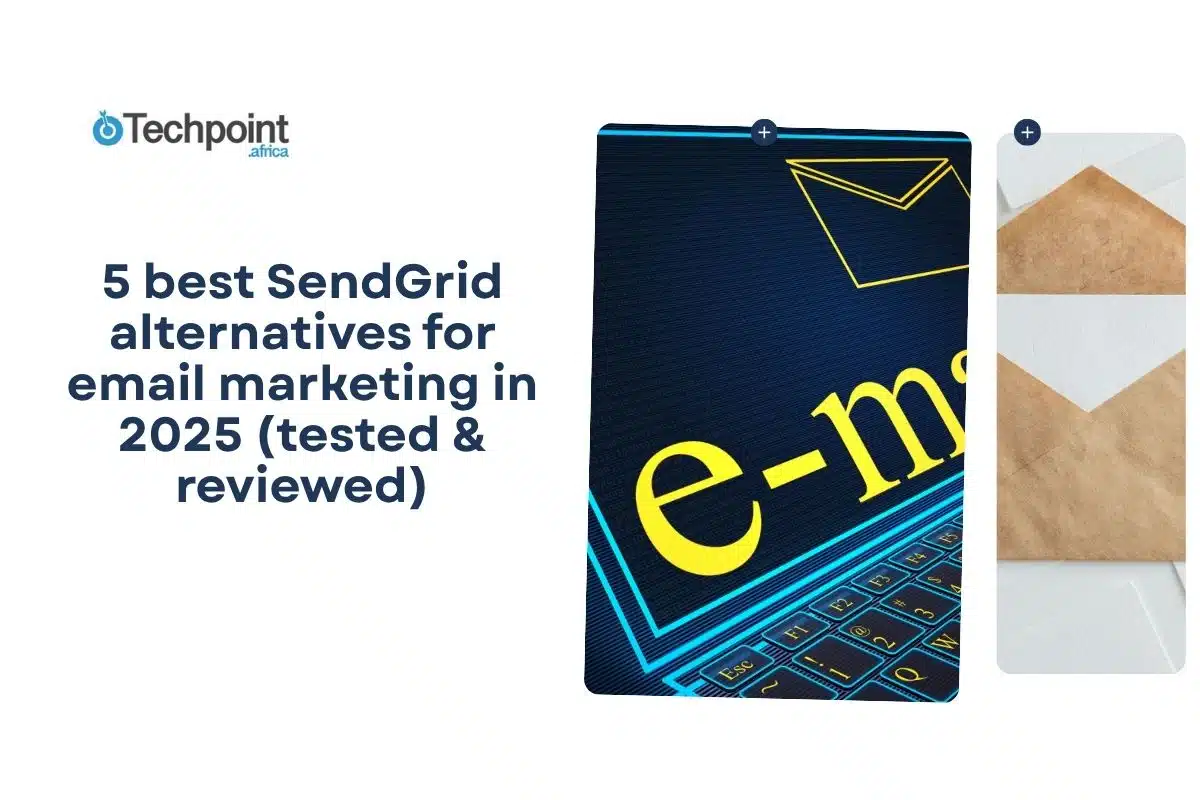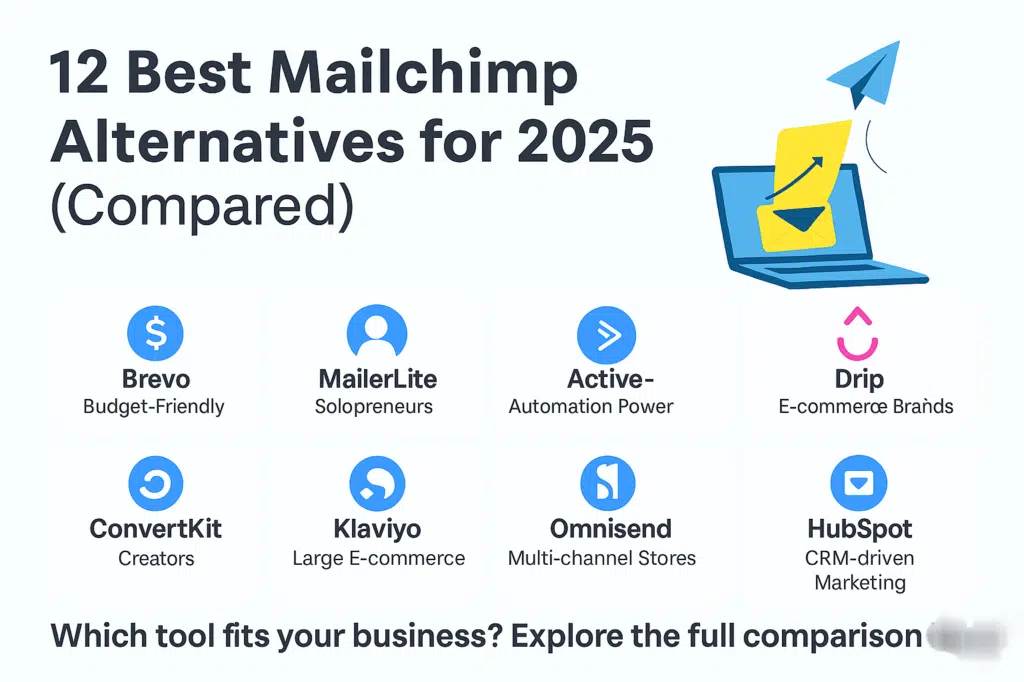
Mailchimp has long been the go-to name in email marketing, powering campaigns for over 13 million users. But in recent years, rising prices, feature restrictions, and deliverability concerns have left many businesses looking elsewhere. If you’re among those searching for better value or more advanced features, you’re not alone. In this guide, we’ll explore the best Mailchimp alternatives that can give you more flexibility, stronger automation, and pricing that actually makes sense.
In this guide you will learn:
- The top 12 Mailchimp alternatives compared by features, pricing, and best use cases.
- Which platforms deliver better automation, integrations, or e-commerce tools.
- Key differences in deliverability, support, and scalability to match your business size.
- How to confidently switch from Mailchimp without losing momentum.
12 best Mailchimp alternatives for 2025
- Brevo (Sendinblue) – Budget-friendly with unlimited contacts.
- MailerLite – Simple, affordable, and great for beginners.
- ActiveCampaign – Advanced automation for power users.
- Drip – E-commerce-focused with revenue attribution.
- ConvertKit – Built for creators, bloggers, and content marketers.
- Klaviyo – The e-commerce powerhouse with predictive analytics.
- Omnisend – Multi-channel campaigns across email, SMS, and push.
- HubSpot Marketing Hub – CRM-driven all-in-one platform.
- GetResponse – Complete marketing suite with webinars.
- AWeber – Beginner-friendly with hundreds of templates.
- Constant Contact – Best for local businesses and event marketing.
- Moosend – Lowest-cost option with solid features.
Comparison table: Mailchimp alternatives at a glance
| Tool | Best For | Free Plan | Starting Price | Standout Feature |
| Brevo | Small businesses | ✓ 300/day | $9/mo | Pay-per-email pricing model |
| MailerLite | Solopreneurs | ✓ 1K subs | $10/mo | Website & landing page builder |
| ActiveCampaign | Automation power | ✗ | $19/mo | Advanced workflow builder |
| Drip | E-commerce brands | ✗ trial | $39/mo | Revenue attribution tracking |
| ConvertKit | Creators & bloggers | ✓ 1K subs | $9/mo | Monetization tools |
| Klaviyo | Large e-commerce | ✓ 250 subs | $45/mo | Predictive analytics |
| Omnisend | Multi-channel stores | ✓ 250 subs | $16/mo | Email + SMS + push campaigns |
| HubSpot | CRM-driven marketing | ✓ limited | $50/mo | Free CRM with full suite |
| GetResponse | All-in-one marketing | ✓ 500 subs | $19/mo | Built-in webinar hosting |
| AWeber | Beginners & coaches | ✓ 500 subs | $16/mo | 700+ pre-built templates |
| Constant Contact | Local businesses | ✗ | $12/mo | Event marketing tools |
| Moosend | Budget seekers | ✗ trial | $7/mo | Lowest-cost paid plan |
Why People Leave Mailchimp
Mailchimp still dominates the email marketing space, but more users are moving away due to a mix of cost, complexity, and limitations.
- Pricing creep: Recent increases make it one of the most expensive options, with users frustrated about paying for unsubscribed contacts.
- Feature gaps: Automation, segmentation, and send-time optimization are often locked behind costly tiers.
- Deliverability concerns: Tests show Mailchimp averages around 79% inbox placement, trailing competitors.
- Support issues: Phone and chat support are only for premium users, leaving smaller businesses with long wait times.
- Clunky interface: Once simple, the redesigns have added extra steps and confusion.
For beginners or those using QuickBooks, Mailchimp may still work. But for businesses needing stronger automation, better deliverability, and predictable costs, switching makes sense.
Now, let’s get into our 12 alternatives.
Budget-friendly Mailchimp alternatives
Not every business needs pricey automation or enterprise-level tools. Sometimes, the priority is keeping costs low without sacrificing essential features. These two platforms stand out for offering generous free tiers and affordable paid plans that beat Mailchimp’s pricing structure.
Brevo (formerly Sendinblue)
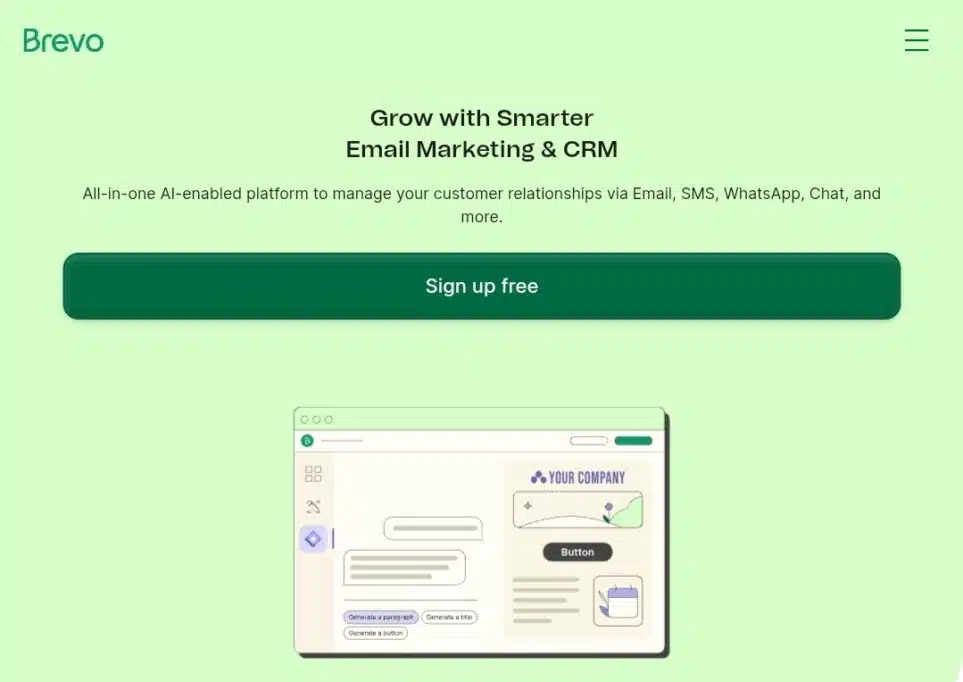
Brevo is a top pick for small businesses because it charges based on emails sent, not the number of contacts you store. This model makes it far more cost-efficient than Mailchimp, especially if your list is large but you send campaigns only a few times a month. Its free plan lets you send 300 emails per day to unlimited contacts, while paid plans start at around $9/month.
Key features include a drag-and-drop editor, automation workflows, transactional email via API, SMS marketing, and even a free built-in CRM. Deliverability averages 88%, compared to Mailchimp’s 79%.
Pros: unlimited contacts, affordable pay-per-email pricing, SMS and email combined.
Cons: 300-email daily cap on the free plan, slower support responses.
Best for: small businesses managing large contact lists but sending fewer campaigns, who want to cut costs without losing functionality.
MailerLite
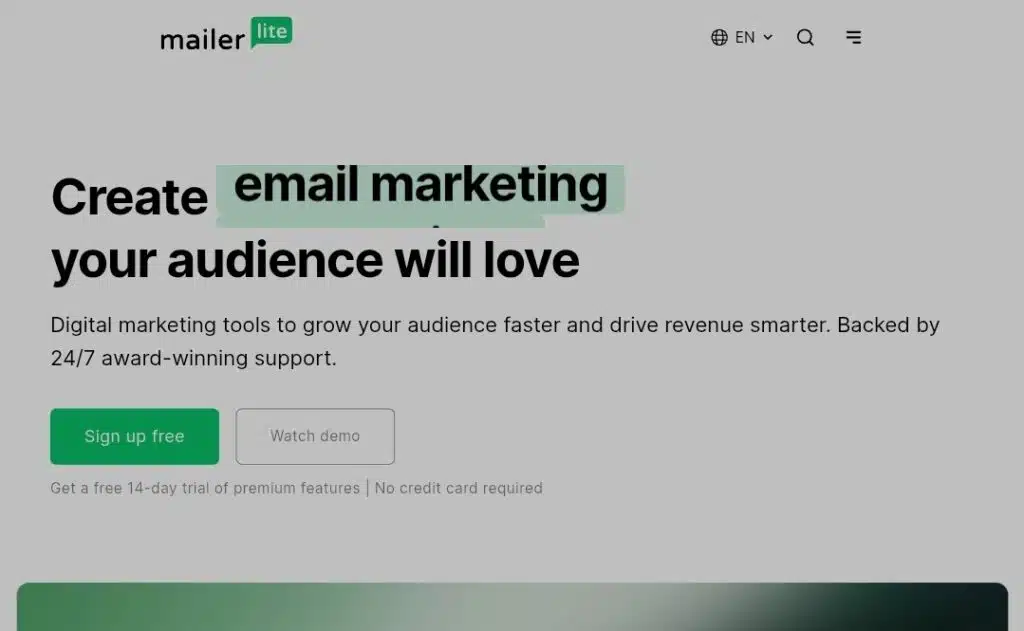
MailerLite is known for being beginner-friendly while offering excellent value. Its free plan covers up to 1,000 subscribers and 12,000 emails per month — already more generous than Mailchimp’s free tier. Paid plans start at about $10/month, scaling predictably as your audience grows.
MailerLite’s strength is its simplicity. You get an intuitive drag-and-drop editor, visual automation builder, landing pages, websites, and even digital product sales. Migration from Mailchimp is smooth, thanks to a built-in import tool.
Pros: generous free plan, easy-to-use interface, affordable scaling, website builder included.
Cons: fewer integrations than Mailchimp, limited CRM features.
Best for: solopreneurs, bloggers, and small startups who want affordable email marketing that stays easy to manage as they grow.
Automation-focused Mailchimp alternatives
If your campaigns rely heavily on complex workflows, behavior-based triggers, and detailed segmentation, Mailchimp’s limited automation can be frustrating. These platforms are built for marketers who want powerful, flexible automation without enterprise-level complexity.
ActiveCampaign
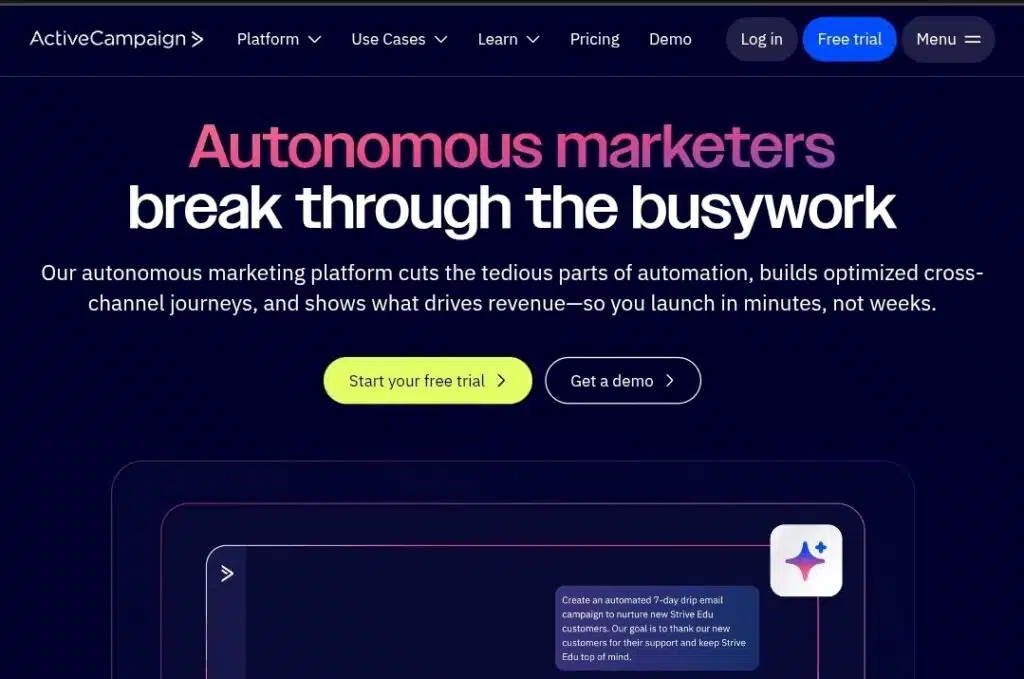
ActiveCampaign is often rated the gold standard for email automation. With over 185,000 customers worldwide, it offers a visual workflow builder that lets you map out complex customer journeys with ease. While there’s no forever-free plan, pricing starts around $19/month for smaller lists, making it accessible for serious marketers.
Standout features include conditional automation logic, 250+ pre-built automation “recipes,” advanced segmentation, and built-in CRM tools. Deliverability rates hover around 89%, above industry averages. Migration from Mailchimp is relatively straightforward, though you’ll need to rebuild automation paths.
Pros: unmatched automation depth, excellent deliverability, CRM and sales tools included.
Cons: higher costs as you scale, steeper learning curve for beginners.
Best for: marketing teams and growing businesses that need advanced automation to nurture leads and personalize customer experiences.
Drip
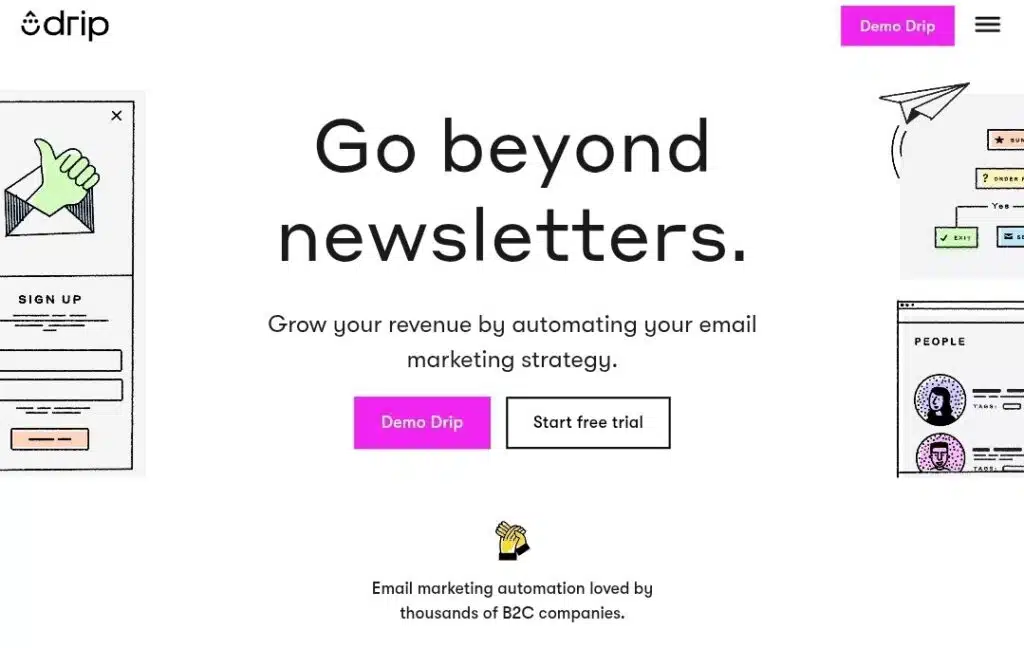
Drip is purpose-built for e-commerce, making it a go-to option for online stores that want smarter automation than Mailchimp offers. Plans start at $39/month, with pricing tied to subscriber count. While there’s no permanent free plan, Drip offers a trial so you can test its features.
Drip’s strength lies in its visual workflow builder and revenue attribution tools. It tracks exactly which emails generate sales and offers pre-built workflows like cart abandonment, post-purchase follow-ups, and product recommendations. Integration with Shopify and WooCommerce is seamless.
Pros: excellent e-commerce automation, strong revenue tracking, intuitive workflow builder.
Cons: no free tier, less useful for non-e-commerce businesses, higher entry price.
Best for: online stores that want precise revenue attribution and ready-to-use workflows to increase conversions.
Creator-focused Mailchimp alternative
For bloggers, YouTubers, podcasters, and solo creators, email marketing isn’t just about sending newsletters — it’s about building a loyal audience and monetizing that connection. Mailchimp’s heavy business focus often feels like overkill in this space. ConvertKit was designed with creators in mind.
ConvertKit
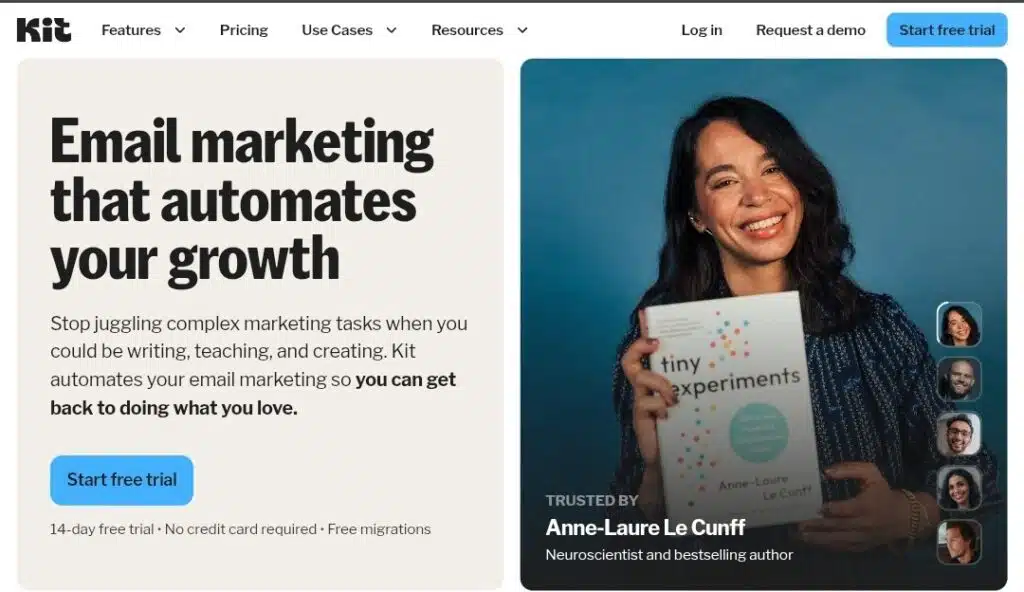
ConvertKit is built specifically for content creators and now powers over 500,000 users. Its free plan covers up to 1,000 subscribers with unlimited email sends, making it one of the most generous starting tiers. Paid plans begin around $9/month, scaling based on subscriber count.
ConvertKit’s standout features include simple yet effective automation, customizable opt-in forms, and creator-friendly monetization tools like tip jars, paid newsletters, and digital product sales. Unlike Mailchimp, which locks many automation features behind higher tiers, ConvertKit makes tagging and segmentation easy from the start.
Pros: generous free plan, monetization tools built-in, intuitive tagging and segmentation.
Cons: fewer email templates compared to Mailchimp, not ideal for large e-commerce brands.
Best for: bloggers, creators, and solo entrepreneurs who want to grow and monetize their audience without the complexity of corporate-style email marketing.
E-commerce Mailchimp alternatives
Running an online store comes with unique email needs: cart recovery, personalized recommendations, and revenue tracking. Mailchimp’s e-commerce features can feel limited unless you’re on its higher tiers. These two platforms are built specifically with online retailers in mind.
Klaviyo
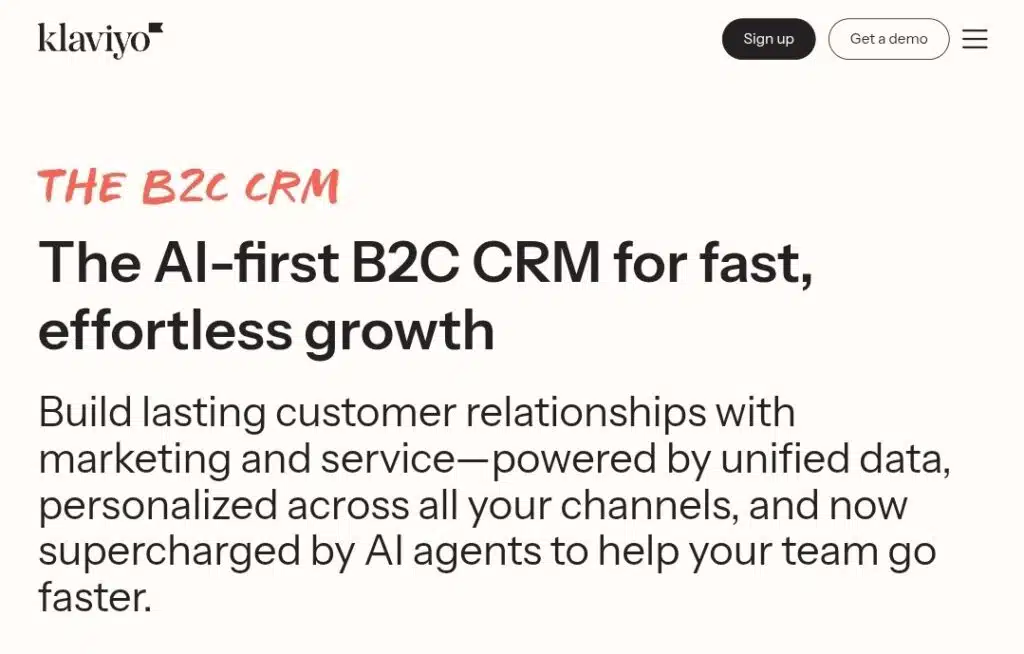
Klaviyo has become the go-to email platform for Shopify, WooCommerce, and BigCommerce merchants. Its free plan supports up to 250 contacts and 500 email sends per month, while paid plans start around $45/month.
The platform shines with predictive analytics — estimating customer lifetime value, churn risk, and purchase probability. It also includes pre-built e-commerce flows like abandoned cart reminders and post-purchase follow-ups. Deliverability rates average about 90%, among the highest in the industry.
Pros: advanced segmentation, strong deliverability, deep Shopify/WooCommerce integration.
Cons: costs rise quickly as your list grows, learning curve for beginners.
Best for: established online stores that want data-driven insights and personalization to drive more sales.
Omnisend

Omnisend is another e-commerce powerhouse, but with a multi-channel twist. Beyond email, it supports SMS and push notifications in the same automation flow. Its free plan includes up to 250 contacts, while paid tiers start at about $16/month.
The platform comes with ready-to-use e-commerce workflows such as cart abandonment, welcome sequences, and product recommendations. Many users highlight how quickly campaigns can be set up, often in under 30 minutes.
Pros: affordable entry pricing, omnichannel campaigns, pre-built automation flows.
Cons: design customization can feel limited, less suited for non-commerce use.
Best for: small to mid-sized e-commerce brands that want email, SMS, and push campaigns in one tool without breaking the budget.
All-in-One Mailchimp alternatives
Some businesses want more than just email marketing — they need CRM, sales, landing pages, and even webinars all in one platform. These tools bundle multiple functions together, offering more value than Mailchimp’s piecemeal upgrades.
HubSpot marketing hub
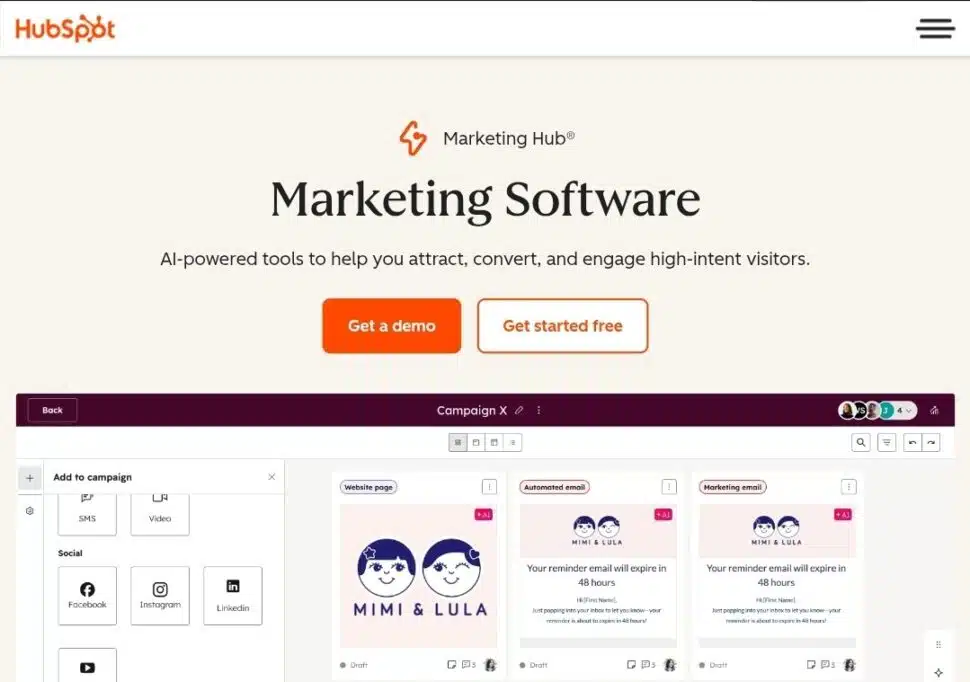
HubSpot is more than an email tool — it’s a full CRM and marketing platform. Its free plan includes basic email marketing, forms, and a forever-free CRM. Paid plans start around $50/month for 1,000 contacts, but costs scale quickly as your database grows.
What sets HubSpot apart is its deep integration of marketing, sales, and service tools. You can manage contacts, score leads, and run campaigns from one place. For small teams, this means fewer disconnected apps.
Pros: free CRM, seamless integration across marketing and sales, scalable features.
Cons: becomes expensive as lists expand, complexity can overwhelm beginners.
Best for: B2B companies and growing businesses that want a central hub for customer data and campaigns.
GetResponse
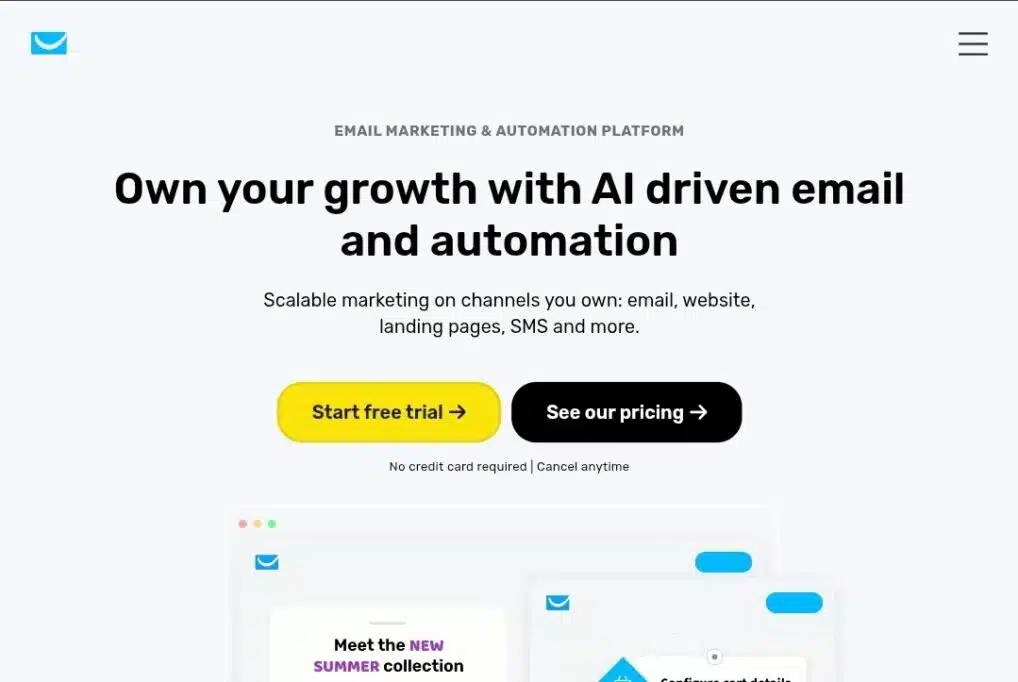
GetResponse has been around for over 20 years and has evolved into an all-in-one marketing suite. Its free plan covers up to 500 contacts, while paid tiers start at about $19/month.
Unique features include built-in webinar hosting (up to 100 attendees), landing pages, sales funnels, and solid automation tools. Unlike Mailchimp, which requires external integrations for webinars, GetResponse handles it in-platform.
Pros: versatile toolkit, webinar hosting, affordable entry pricing.
Cons: free plan is limited, interface can feel crowded for new users.
Best for: small businesses that want a single platform for email, webinars, and automation without stacking extra subscriptions.
Specialized Mailchimp alternatives
Not every business needs advanced analytics or full marketing suites. Some just need straightforward tools, local event management, or budget-friendly pricing. These three platforms stand out for their specialized strengths.
AWeber
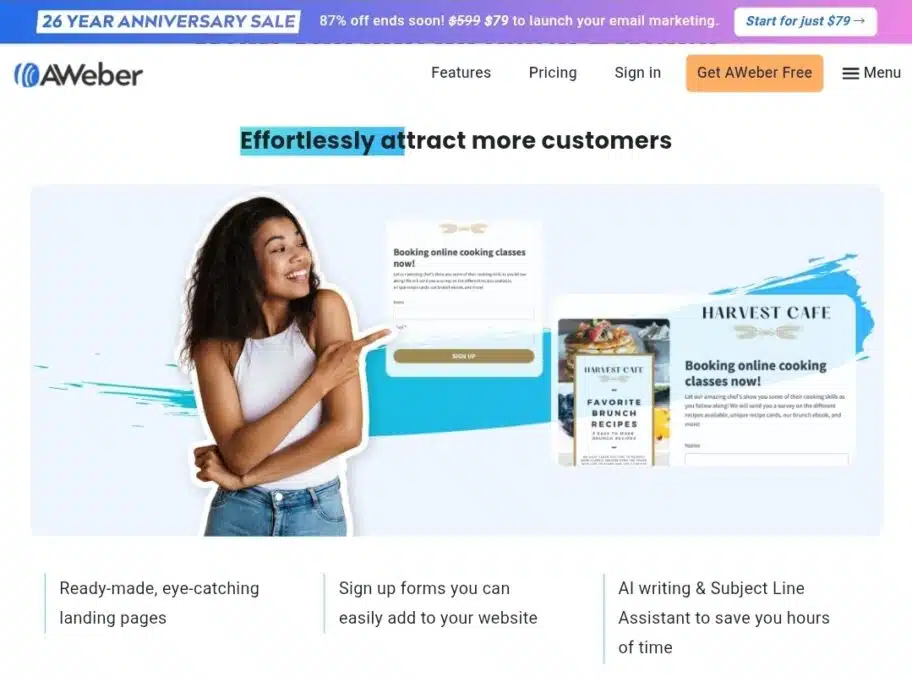
AWeber has been around since 1998 and is still popular with small businesses and coaches. Its free plan covers up to 500 subscribers and 3,000 email sends per month. Paid plans begin around $16/month.
AWeber’s library of 700+ templates makes it easy to design professional campaigns without much effort. It also offers basic automation, a drag-and-drop editor, and a long track record of reliability.
Pros: easy setup, strong template selection, reliable deliverability.
Cons: interface feels dated, automation features are less advanced.
Best for: beginners, coaches, or consultants who want simple email marketing that just works.
Constant contact
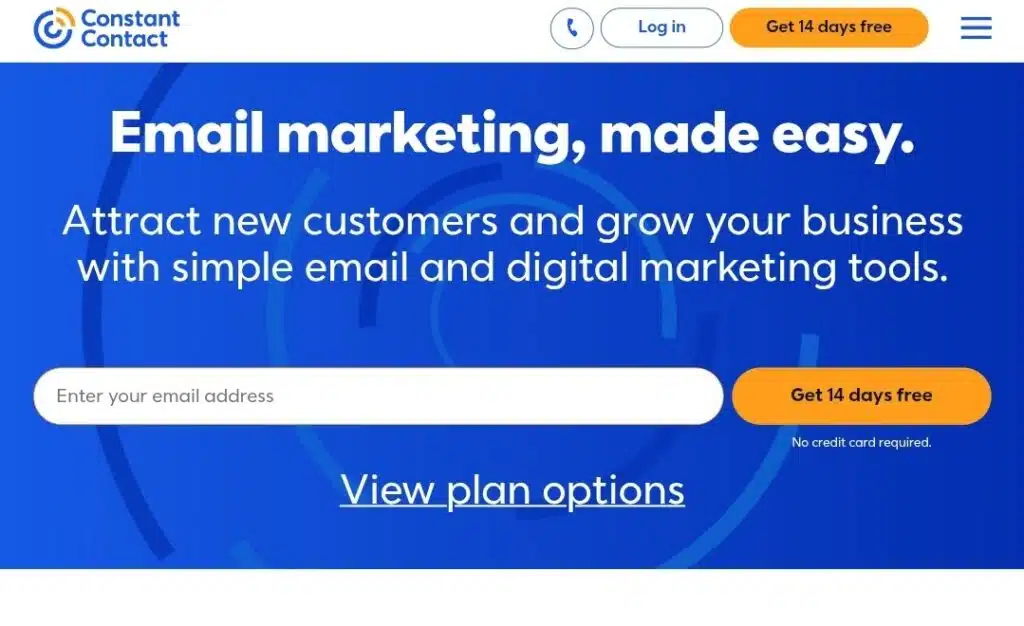
Constant Contact has carved a niche with local businesses, nonprofits, and event-based organizations. There’s no permanent free plan, but pricing starts at about $12/month for small lists.
Its standout feature is event marketing: you can manage RSVPs, registrations, and surveys directly within the platform. It also offers social media posting tools, giving local businesses a simple way to run campaigns without multiple apps.
Pros: event tools built-in, strong support, easy to use.
Cons: automation is limited, pricing climbs as contacts grow.
Best for: local businesses, community organizations, and nonprofits that need both email and event management.
Moosend
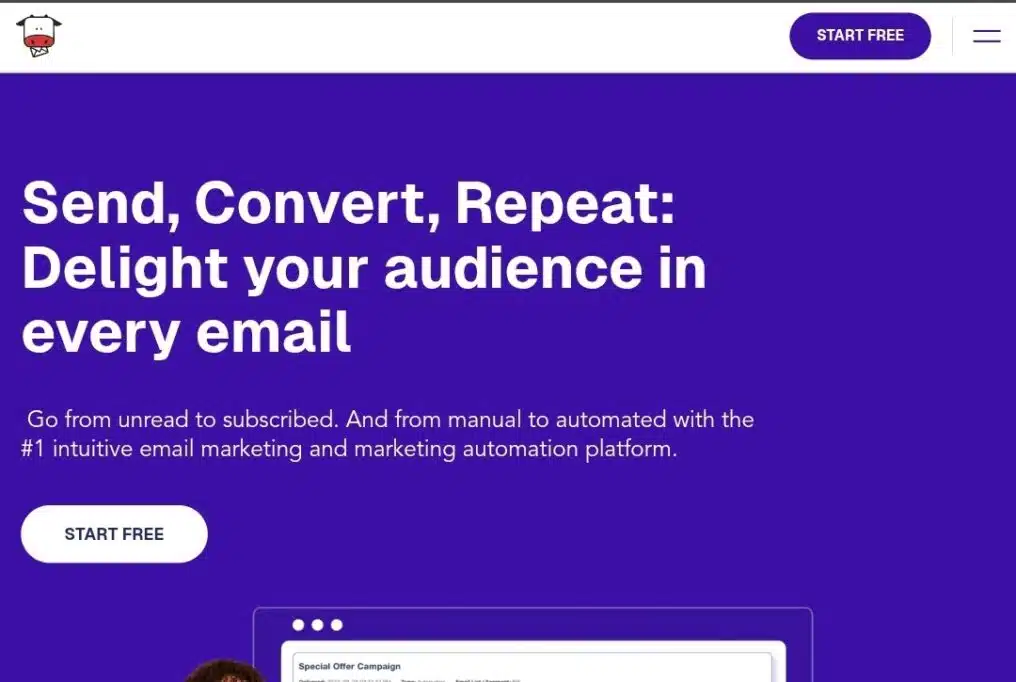
Moosend is one of the most affordable Mailchimp alternatives, with paid plans starting at just $7/month. It doesn’t have a permanent free tier, but the pricing undercuts nearly every other tool.
Despite its low cost, Moosend offers automation workflows, landing pages, reporting, and e-commerce integrations. The platform has a smaller ecosystem, but it delivers surprising value for the price.
Pros: lowest-cost entry pricing, solid automation, clean interface.
Cons: limited integrations, smaller user community.
Best for: budget-conscious businesses that want reliable email marketing features without overspending.
Migration guide: switching from Mailchimp
Moving away from Mailchimp isn’t as daunting as it seems. Most alternatives let you import contacts and tags directly. A smooth switch usually involves:
- Export your data: Download lists, tags, templates, and reports from Mailchimp.
- Clean your list: Remove bounced or inactive contacts before import.
- Import to new platform: Map fields and reapply tags or segments.
- Rebuild automations: Start with welcome series and abandoned cart flows.
- Test campaigns: Send to a small group to check deliverability.
- Update signup forms: Replace old Mailchimp embeds with new ones.
Tip: Run both platforms in parallel for a few weeks before fully canceling Mailchimp.
Decision framework: which alternative fits you?
- Solo creators/bloggers → ConvertKit or MailerLite.
- E-commerce stores → Klaviyo, Omnisend, or Drip.
- B2B lead nurturing → ActiveCampaign or HubSpot.
- Local businesses/nonprofits → Constant Contact or AWeber.
- Budget-conscious teams → Brevo or Moosend.
Final takeaways
- Mailchimp isn’t the only option, many platforms offer better pricing, automation, or support.
- The right choice depends on your business model: creators, e-commerce, B2B, or local.
- Switching tools is manageable, and the long-term gains in deliverability and features are worth it.
Conclusion
Mailchimp paved the way for modern email marketing, but its rising costs and limits have opened the door for strong competitors. From budget-friendly picks like Brevo to e-commerce powerhouses like Klaviyo, there’s an alternative for every use case. The key is matching your needs with the right tool, and making the move before pricing or deliverability slows your growth.
Also read:
How to Delete Your Gmail Account Permanently: Complete Step-by-Step Guide
20 of my favorite free AI apps you can start using today
I found the 300 best ChatGPT prompts for 2025—my ultimate list

